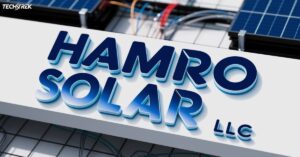E26 bulbs are the standard light bulbs used in North America, found in homes and businesses across the continent. These versatile light sources have remained largely unchanged in their base design for over a century, adapting to new technologies while maintaining compatibility with existing fixtures.
Understanding E26 bulbs is crucial for anyone involved in lighting, from homeowners to professional electricians. This comprehensive guide will explore the characteristics, applications, and evolution of E26 bulbs, providing valuable insights into their role in contemporary illumination.
We’ll delve into the history, technical specifications, and future prospects of E26 bulbs, offering a thorough understanding of these ubiquitous lighting elements. Whether you’re a curious consumer or a lighting professional, this article will shed light on all aspects of E26 bulbs.
The Basics of E26 Bulbs
E26 bulbs are named for their standardized base type, where “E” stands for Edison screw, and “26” indicates the diameter of the base in millimeters. This design allows for easy installation and replacement in a wide range of light fixtures, making E26 bulbs the most common type used in North American households.
These bulbs fit into standard light sockets found in lamps, ceiling fixtures, and various other lighting applications. Their widespread use ensures compatibility with most domestic lighting needs, contributing to their enduring popularity in the lighting market.
While the base remains consistent, E26 bulbs come in different shapes, sizes, and technologies, including incandescent, fluorescent, halogen, and LED options. This versatility has allowed E26 bulbs to adapt to changing energy efficiency standards and consumer preferences over time.
Historical Evolution of E26 Bulbs
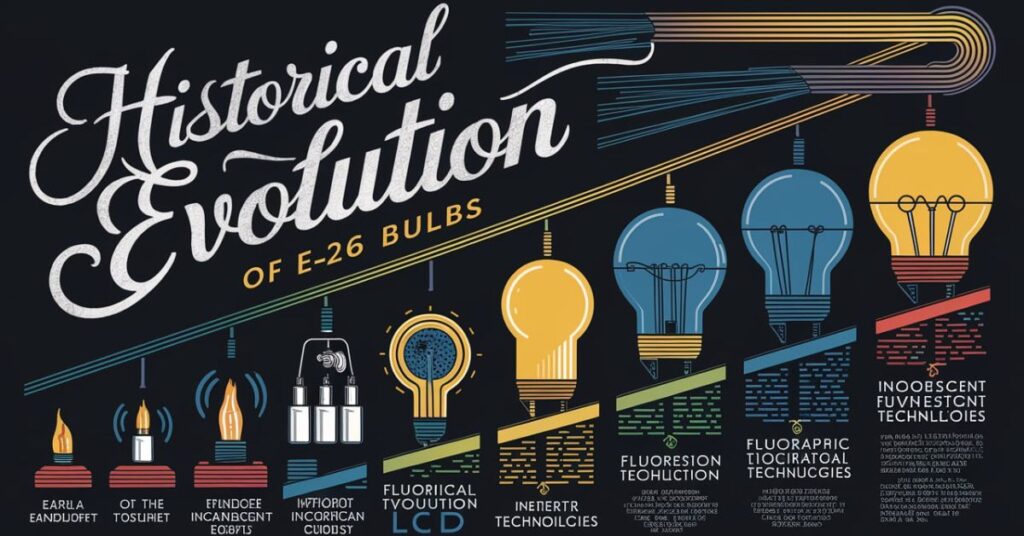
The E26 base design traces its roots back to the late 19th century when Thomas Edison developed it for his groundbreaking incandescent light bulbs. This standardized base quickly gained popularity due to its simplicity, reliability, and ease of use.
Over the decades, the E26 base has remained largely unchanged, allowing for backwards compatibility with older fixtures. This consistency has been a key factor in its widespread adoption and continued use in North American lighting systems.
While the base design has stayed constant, the technology within E26 bulbs has evolved significantly. From early incandescent models to modern LED versions, these bulbs have adapted to meet changing energy efficiency standards and consumer demands for better lighting solutions.
Anatomy of an E26 Bulb
An E26 bulb comprises several key components that work in harmony to produce light. The base, measuring 26mm in diameter, features screw threads that allow for easy insertion into compatible sockets.
Above the base is the bulb itself, which can take various shapes depending on the bulb type and intended use. Common shapes include the classic A19 (pear-shaped), globe, reflector, and candle-style bulbs.
The E26 Base in Detail
The E26 base is typically constructed from aluminum and features a series of screw threads. These threads ensure a secure connection with the socket and also serve as part of the electrical contact.
At the bottom of the base is a small metal contact point. This point, in conjunction with the threaded sides, completes the electrical circuit when the bulb is screwed into a socket.
Common Shapes of E26 Bulbs
While the base remains consistent, E26 bulbs come in various shapes to suit different lighting needs:
- A19: The most common shape, resembling a pear
- Globe: Spherical shape, often used for decorative purposes
- BR30: Bulged reflector, commonly used in recessed lighting
- PAR: Parabolic aluminized reflector, used for directional lighting
Each shape serves a specific purpose, influencing light distribution and aesthetic appeal. The choice of shape often depends on the fixture and desired lighting effect.
Read this Blog: Tech Gaming Defstartup: Revolutionizing the Gaming Industry
E26 vs. Other Common Base Types
While E26 is the standard in North America, other regions use different base types. For example, Europe commonly employs the E27 base, which is slightly larger at 27mm in diameter.
Smaller base types like E12 (candelabra) and E17 (intermediate) are used for decorative or specialized lighting. Larger bases such as E39 (mogul) are typically found in industrial or high-wattage applications.
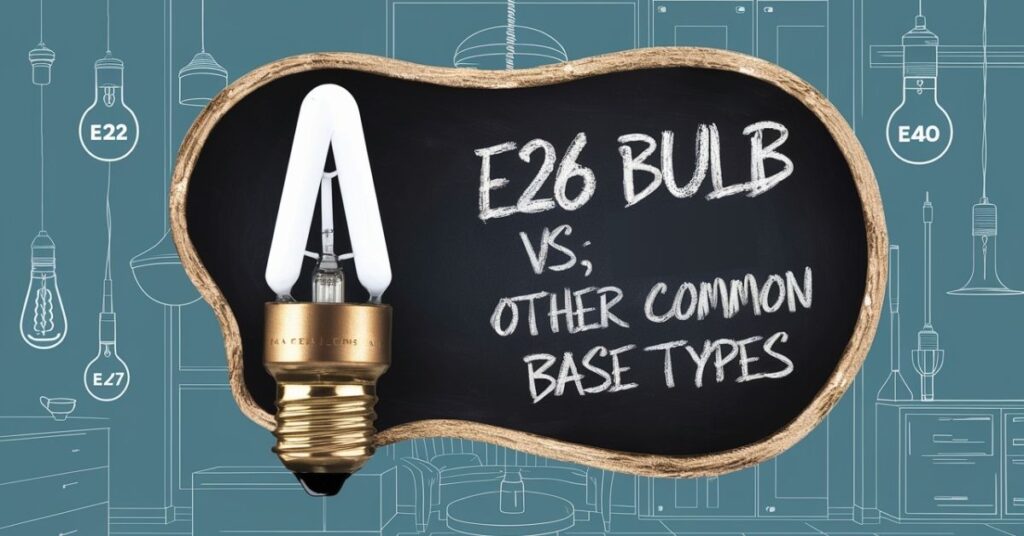
Understanding these differences is crucial when dealing with international lighting products or specialized fixtures, as base types are not always interchangeable between regions.
Comparison of Common Bulb Base Types
| Base Type | Diameter | Common Use | Region |
| E26 | 26mm | General household | North America, Japan |
| E27 | 27mm | General household | Europe, Africa, South America |
| E12 | 12mm | Candelabra, decorative | Worldwide |
| B22 | 22mm | General household | UK, Australia, India |
| E39 | 39mm | High-wattage, industrial | Worldwide |
Identifying an E26 Bulb
- Base Size: 26mm diameter Definition: The standard size of an E26 base, approximately one inch in diameter.
- Screw Threads: Visible on the sides of the base Definition: The spiral grooves that allow the bulb to be screwed into a socket.
- Metal Contact Point: Located at the bottom of the base Definition: The small metal tip that completes the electrical circuit.
- Labeling: Often marked as “E26” or “Medium Base” Definition: Information printed on the bulb or packaging indicating the base type.
- Compatibility: Fits standard North American light sockets Definition: The ability to be used in most household light fixtures in North America.
Applications of E26 Bulbs
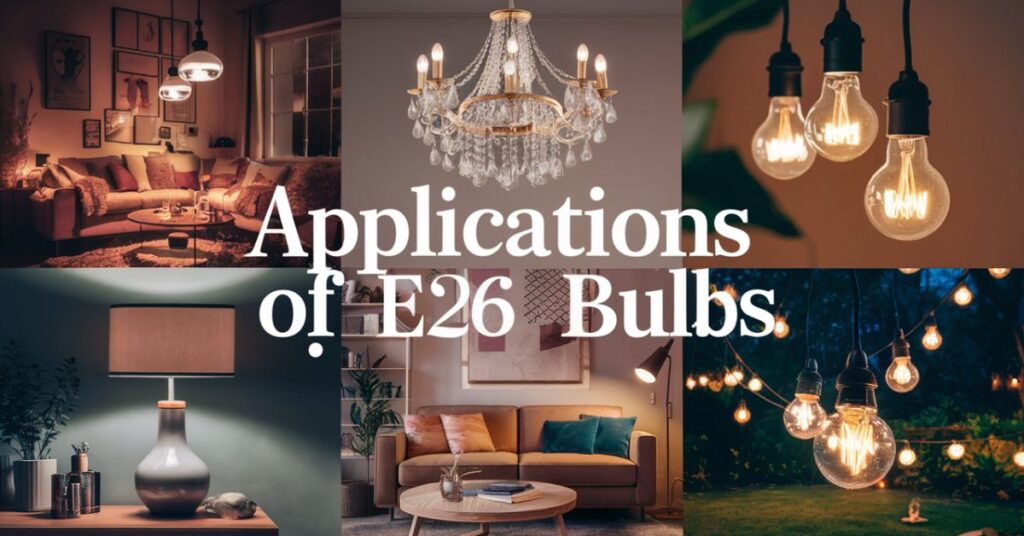
E26 bulbs are incredibly versatile and can be found in a wide range of lighting applications. Their standard size and widespread adoption make them suitable for most household lighting needs.
Beyond homes, E26 bulbs are often used in commercial and institutional settings like offices, schools, and retail spaces. Their versatility allows for easy replacement and maintenance in various lighting fixtures.
E26 Bulbs in Smart Lighting Systems
With the rise of smart home technology, E26 bulbs have found a new niche in smart lighting systems. Many manufacturers now produce smart LED bulbs with E26 bases that can be controlled via smartphone apps or voice assistants.
The combination of the familiar E26 base with advanced smart technology has helped bridge the gap between traditional lighting and modern, connected home systems.
Energy Efficiency and E26 Bulbs
The E26 base is compatible with various bulb technologies, including energy-efficient options:
- LED E26 bulbs: Offer high energy efficiency and long lifespan
- CFL E26 bulbs: Provide good energy savings at a lower initial cost
- Halogen E26 bulbs: More efficient than traditional incandescent, but less so than LED or CFL
By choosing energy-efficient bulbs, consumers can reduce their energy consumption and costs without needing to change their existing light fixtures.
Advantages and Limitations of E26 Bulbs
Advantages:
- Widespread compatibility with standard North American light fixtures
- Easily available in a variety of shapes, sizes, and technologies
- Simple screw-in design allows for easy installation and replacement
- Versatile enough for use in both residential and commercial settings
- Compatible with energy-efficient technologies like LED and CFL
Limitations:
- Not universally compatible with lighting fixtures outside of North America
- Base size may be too large for some compact or specialized lighting designs
- Energy efficiency varies greatly depending on the bulb technology used
- May require adapters when used with non-standard or international fixtures
- Potential for loosening over time due to heat cycles and vibration in some applications
Choosing the Right E26 Bulb for Your Needs
Selecting the appropriate E26 bulb involves considering several key factors to ensure optimal lighting for your space. The wattage, lumens, color temperature, energy efficiency, and dimming capabilities are all important aspects to evaluate when making your choice.
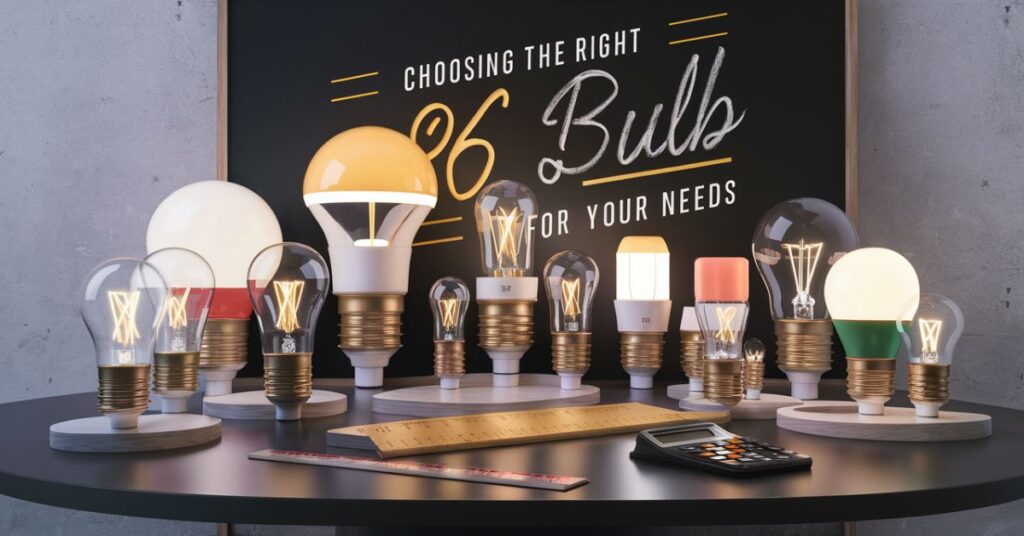
When choosing an E26 bulb, it’s crucial to match the bulb’s specifications with your fixture’s requirements and your lighting needs. Consider the intended use of the space, whether it’s for task lighting, ambient lighting, or accent lighting, as this will influence your decision on brightness and color temperature.
It’s also important to think about long-term costs and environmental impact when selecting it . While LED bulbs may have a higher upfront cost, their energy efficiency and longer lifespan often make them more economical and environmentally friendly in the long run.
The Future of E26 Bulbs
As lighting technology continues to evolve, the future of E26 bulbs remains bright. The standardized base ensures that new lighting technologies can be easily integrated into existing fixtures.
LED technology is likely to dominate market in the coming years, offering improved efficiency and advanced features like smart connectivity. However, the familiar E26 base will continue to provide a bridge between new technologies and existing infrastructure.
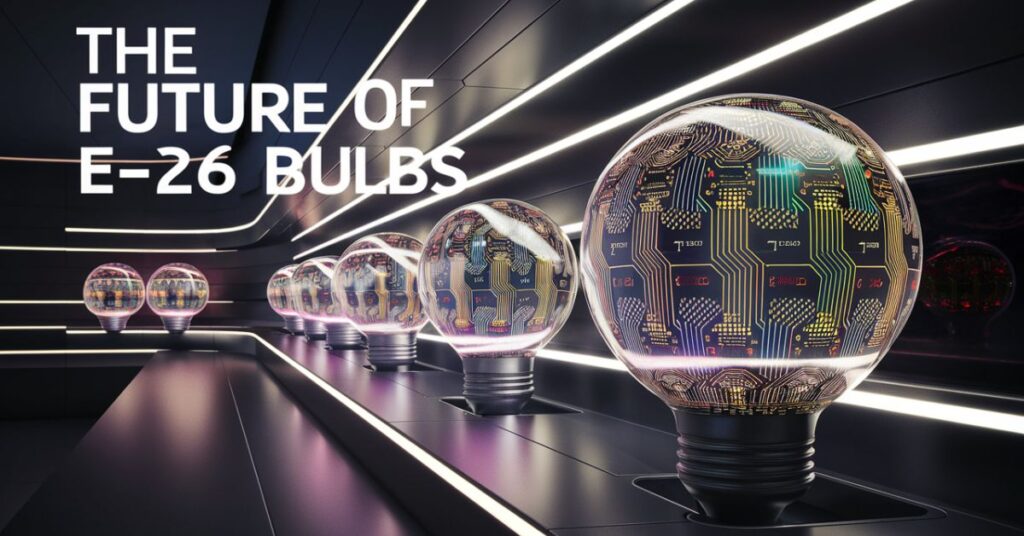
Innovations in materials and manufacturing may lead to even more efficient and durable , potentially extending lifespans and reducing environmental impact further.
Conclusion
E26 bulbs have been a cornerstone of lighting technology for over a century, providing a standardized solution for a wide range of lighting needs. Their versatility and widespread adoption have made them a staple in North American homes and businesses.
As we’ve explored, E26 bulbs come in various types, from traditional incandescent to modern LED and smart bulbs. Understanding their characteristics, advantages, and limitations can help you make informed decisions when choosing lighting for your space.
Looking to the future, E26 bulbs are likely to continue evolving with new technologies while maintaining their familiar form factor. This balance of innovation and compatibility ensures that they will remain a relevant and important part of our lighting landscape for years to come.
Frequently Asked Questions
What does the “E” in E26 stand for?
The “E” stands for Edison screw, named after Thomas Edison who invented this base type.
Are E26 and A19 bulbs the same thing?
No, E26 refers to the base type, while A19 describes a common bulb shape.
Can I use an E26 bulb in an E27 socket?
In most cases, E26 bulbs can fit in E27 sockets, but it’s not guaranteed to be safe or function properly.
What’s the difference between E26 and medium base bulbs?
There is no difference; “medium base” is another term for E26 bulbs in North America.
Are all E26 bulbs dimmable?
No, not all E26 bulbs are dimmable. Check the bulb’s specifications to ensure compatibility with dimmer switches.






